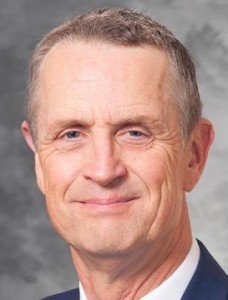MADISON — Standing in front of a room of business professionals, Jill McDermott shares a number: two quadrillion – the number of megabytes of information broadcast daily. She pauses to let the audience reflect on how this inundation of information contributes to distractions in the workplace that can chip away at a person’s well-being and ability to respond to daily challenges, whether it’s giving projects the attention they deserve or shaking off a setback or conflict with a colleague.
Estimates suggest distractions in U.S. workplaces cost more than $650 billion per year. These are challenges McDermott hopes to address as program director of a new partnership between the Center for Investigating Healthy Minds, Inc., and the Wisconsin School of Business Center for Professional and Executive Development.
A curriculum developed by the centers, Cultivating Well-Being a Neuroscientific Approach, fits into a larger conversation about employee well-being in the workplace and how organizations are adapting to promote health among their employees, she says.
“Many workplaces are shifting their focus to encompass the whole person,” McDermott says. “Each of us – no matter what role we play in the organization – can bring our whole person to that. Those lines between personal and professional are dissolving, if not totally gone.” The skill-based program draws from scientifically derived concepts adapted from Center for Investigating Healthy Minds founder Richard Davidson’s best-selling book The Emotional Life of Your Brain. These dimensions of emotional style include attention, resilience, sensitivity to context, self-awareness, outlook and social intuition.
“These emotional styles are well researched in individuals, with increasing evidence pointing to the idea that well-being skills can be learned,” Davidson says. “We imagine this will be the case in the workplace, but we’re collecting data and studying the curriculum to find out.”
Scientists plan to examine how the curriculum will affect well-being and emotional dimensions such as outlook, attention and resilience while gauging their impact on workplace-relevant measures such as absenteeism, productivity, cooperation and distraction.
Davidson says the research component of the program will continuously shape the program’s effectiveness over time. McDermott and other facilitators involved with the collaboration have traveled regionally and nationally to pilot and evaluate the program with a range of companies and organizations, including one of the Big Four accounting firms.
After participating in the Cultivating Well-Being program, Ron Sliwinski, president and CEO of UW Hospital and Clinics, says his organization plans to leverage the curriculum at the launch of UW Health at The American Center, its new health and wellness facility opening in August on Madison’s east side. Rather than viewing well-being skills and mindfulness practices as a luxury in the workplace, he sees it is an investment.
“It’s not how we recover from the burnout, fatigue and tension; it’s how we change the way we manage these stressors so the outcome isn’t burnout, fatigue and tension,” he says. “To me, that is the power of this message – we can approach work in a different fashion, like preventive medicine versus curative medicine.”
To learn more about the program, visit uwcultivatingwellbeing.com.
—Marianne Spoon


